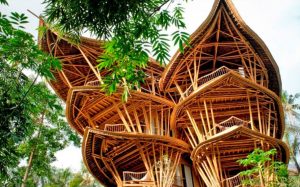Back in 2016, my family and I went on vacation to Disney World and we took the Animal Kingdom Wilderness Safari Tour. The tour guides took us into the depths of the colossal hybrid theme park/zoo/nature reserve as we got to see some of the animals up close and personal. Our tour guides gave us a lot of great information about the different animals and theme park easter eggs but one of things that I found most memorable was something that he said about a wooden bamboo spoon.

He mentioned that Disney and its many subsidiaries are hoping to transition all of their utensils from plastics to bamboo materials. I thought that it was a great idea to help reduce plastics but I was a little bit shocked that they would view bamboo as their best alternative. When I asked him further, my guide told me about how they want to use bamboo because it grows at such a quick speed. Making it one of the easier biodegradable materials out there to acquire and one that will make economic sense.

As regenerative resources has come up more and more in class I began to recall this little memory. Intrigued by the possibilities of bamboo I decided to dig a little deeper and investigate how businesses are using it. From the few articles that I read through I was able to find that bamboo is generally though of as one the next best sustainable materials that will be used commercially. Bamboo has been found to be a relatively low energy intensive plant to grow, it is adaptable to many different climates and is rapidly regenerative. With the same structural integrity as modern building materials, businesses recognize the viability of integrating bamboo into their everyday operations.

Companies are now taking advantage of this sustainable resource. Movement Global is using bamboo fibres to make its own line of clothing. Many construction companies are also looking into concrete filled bamboo scaffolding to supplant their Eco friendly buildings. These initiatives are just the beginning and the use of bamboo in everyday products are growing everyday. Best of all is that the bamboo acts as a carbon sink, sequestering carbon emissions in the atmosphere before it is cut down. Even though it gets processed into whatever product gets made, the carbon remains in a much more stable form than being left in the atmosphere. When people dispose of the bamboo into the compost it will slowly release back into the environment at a much more manageable rate. Reduced waste to the landfill, a readily available source and better carbon management. Bamboo is the perfect regenerative resource that companies can adopt.
I like how your personal experiences helped shape your discovery about your topic! This is an interesting example of using the rate of which a resource replenishes as a metric for sustainability. I did a little more research, and found that bamboo is also used in roads and highways for structural support – so it can also be an important addition to a product make-up instead of an entire production substitution.